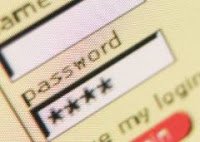
MSC Trustgate.com Sdn Bhd is the most famous application of third party certification programme in Malaysia. It is a licensed Certificate Authority (CA) operating within the Multimedia Super Corridor. MSC Trustgate was incorperated in 1999 to meet the growing need for secure open network communications and become the catalyst for the growth of e-commerce, both locally and across the ASEAN region. The vision of Trustgate is to enable organizations to conduct their business securely over the Internet, as much as what they have been enjoying in the physical world due to the issue above.
MyKad PKI

Malaysia Government has put in place a smart National Identity Card (MyKad) for every citizen. My Kad with PKI capability allows its holder to conduct online transaction with governement agencies private sectors.

MyKey is the MyKad PKI solution that works with the physically MyKad which allowing to authenticate users online and to digitally sign documents or transactions and is accepted by the Malaysian Government.
MyTRUST
For Mobile Signature
Users can turn a SIM Card into Mobile Digital Identity for secure banking and other financial services with MyTRUST. Users are able to digitally sign any transaction with ease and convenient via their mobile phone.

For Government

For Banks & Enterprise

SSL is the short for Secure Sockets Layer. It is a protocol developed by Netscape for transmitting private documents via the Internet.
 VeriSign is the leading SSL Certificate Authority that enabling secure e-commerce, communications, and interactions for web sites, intranets, and extranets. It choose the most trusted mark on the internet and enable the strongest SSL encryption available to every site visitor.
VeriSign is the leading SSL Certificate Authority that enabling secure e-commerce, communications, and interactions for web sites, intranets, and extranets. It choose the most trusted mark on the internet and enable the strongest SSL encryption available to every site visitor. When we see the VeriSign logo on the website, we can click on the seal to find out more about the security of the site.
When we see the VeriSign logo on the website, we can click on the seal to find out more about the security of the site.Public Key Infrastructure (PKI)
Trustgate provide PKI to assist all the companies in conducting their business over the internet.
Organizations are helped by PKI technologies to enhance the security of the data and manage identification credentials from the users and organizations. It helped to secure by based on the exchange of digital certificates between authenticated users and trusted resources.

Last but not least, TPC can enhance customer trust because of its efficient management of digital certificates. It also have a complete control over digital certificate issuance, usage, and certificate content. Besides, it is easy to use and manage with web-based user and administrative services. Scalability of TPC also provide customers a better solution if there are any treats happen toward the computer system.
- http://www.verisign.com/
- http://www.trademal.com/global/index.php/id/17463/target/about/MSC_Trustgate_com_Sdn_Bhd/index.html






